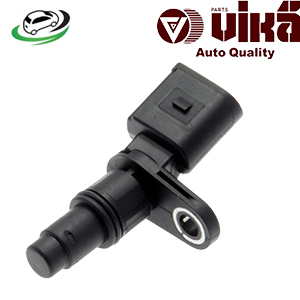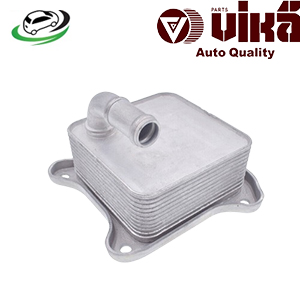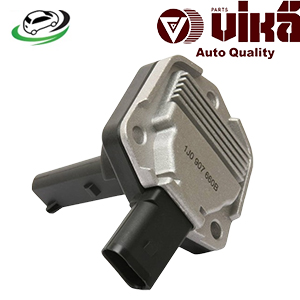-3%
Get AUDI B5 A4/ B5 S4/ B6 A4/ C5 A6/ C5 Allroad/ C5 S6/ D2 A8 / VW 337/20AE/ Golf IV/ Jetta IV/ Jetta IV GLI Oil Level Sensor 1J0907660B
The oil level sensor is a critical component in modern internal combustion engines, providing real-time monitoring of the engine’s oil levels. It plays a crucial role in maintaining the engine’s health by ensuring there’s sufficient lubrication to prevent mechanical damage. In this article, we will explore the functions, benefits, importance, common issues, and maintenance tips associated with the oil level sensor, as well as how it contributes to the longevity of your vehicle’s engine.
1. Introduction to the Oil Level Sensor
The oil level sensor is an electronic device that monitors the amount of oil in the engine. Engine oil is essential for lubricating moving parts, reducing friction, dissipating heat, and preventing wear and tear in various engine components. Without an adequate amount of oil, the engine risks overheating or suffering severe mechanical damage. The oil level sensor ensures that the driver is warned if the engine oil drops below a safe level, prompting timely action to prevent costly repairs or even catastrophic engine failure.
The oil level sensor is typically mounted in the engine oil pan, where it measures the oil’s quantity. In modern vehicles, the data gathered by the sensor is transmitted to the engine control unit (ECU) or directly displayed on the dashboard to alert the driver.
2. Functions of the Oil Level Sensor
A. Real-Time Oil Level Monitoring
The primary function of the oil level sensor is to provide real-time monitoring of the oil level in the engine. It detects any significant drop in oil levels and sends a signal to the ECU or the vehicle’s warning system, usually triggering a dashboard light. This is especially crucial in preventing engine operation with low oil, which can cause the moving parts to wear out faster due to lack of lubrication.
B. Early Warning System
By alerting the driver early, the oil level sensor helps avoid potential damage that could occur due to low oil levels. The early warning allows the driver to top off or change the oil before the situation becomes critical. This can be the difference between a minor inconvenience and a major engine failure, saving the driver from costly repairs.
C. Supports Engine Efficiency
Adequate oil levels ensure that the engine operates at optimal efficiency. The oil level sensor helps maintain the balance between too little and too much oil. If the engine is under-lubricated, it may overheat, and the performance may drop due to increased friction between moving parts. If overfilled, the excess oil can cause foaming and aeration, reducing the oil’s lubricating ability and potentially damaging the engine.
D. Integration with Engine Control Unit (ECU)
In most modern vehicles, the oil level sensor is connected to the ECU, which monitors and manages the engine’s performance. The sensor feeds oil level data into the ECU, which can then adjust engine settings, including performance and safety modes, based on the available oil quantity. For example, if the oil level is critically low, the ECU may trigger a limp mode to limit engine power and prevent damage until the oil is replenished.
3. Types of Oil Level Sensors
There are different types of oil level sensors, and their designs may vary depending on the make and model of the vehicle. However, they all serve the same purpose—monitoring the engine’s oil levels. Below are some common types of oil level sensors:
A. Float-Type Sensors
This is one of the simplest forms of oil level sensors. A float mechanism moves up or down depending on the oil level in the engine. As the oil level drops, the float triggers a switch that sends a signal to the ECU or dashboard warning system. Though reliable, float sensors can be prone to wear and mechanical failure over time.
B. Capacitive Sensors
Capacitive oil level sensors use an electrical field to measure the oil level. These sensors detect changes in capacitance, which varies with the oil level. They are more accurate than float-type sensors and have fewer moving parts, making them less prone to mechanical wear and failure.
C. Resistive Sensors
Resistive oil level sensors work by measuring the resistance between two points in the sensor that are immersed in oil. As the oil level changes, the resistance between these two points also changes, providing a measurement of oil quantity. These sensors offer a good balance between accuracy and durability.
D. Ultrasonic Sensors
Ultrasonic sensors use sound waves to measure the oil level. They emit ultrasonic pulses that travel through the oil and reflect back when they hit the oil’s surface. The time it takes for the sound waves to return is used to calculate the oil level. This method is highly accurate and reliable but is more commonly found in high-end vehicles.
4. Benefits of the Oil Level Sensor
The oil level sensor offers several benefits, especially when it comes to engine protection and driver convenience. These benefits include:
A. Preventing Engine Damage
One of the most significant benefits of the oil level sensor is that it helps prevent engine damage caused by low oil levels. Lack of oil can lead to metal-on-metal contact between engine parts, causing premature wear, overheating, and even engine seizure. By alerting the driver before the oil level becomes dangerously low, the sensor helps maintain proper lubrication and prevents these costly problems.
B. Improved Safety
Driving with insufficient oil can lead to sudden engine failure, which poses a safety risk, especially on highways or in heavy traffic. The oil level sensor’s warning system ensures that the driver is aware of the low oil situation before it escalates, reducing the risk of accidents or sudden breakdowns.
C. Enhanced Vehicle Reliability
A properly functioning oil level sensor contributes to the overall reliability of the vehicle by ensuring that the engine has sufficient lubrication at all times. Consistent oil level monitoring minimizes the risk of engine failure due to inadequate oil, making the vehicle more dependable.
D. Lower Maintenance Costs
By alerting drivers to low oil levels before serious engine damage occurs, the oil level sensor can reduce the need for costly repairs. Timely action, such as topping up oil or fixing any leaks, can prevent major issues like engine overheating, component wear, and oil starvation.
E. Optimized Oil Changes
Some advanced oil level sensors also help optimize oil changes by providing accurate data on the engine’s oil consumption. This allows drivers to adjust oil change intervals based on actual usage, potentially extending the life of the oil and saving on maintenance costs.
5. Common Issues with Oil Level Sensors
Like any other automotive component, the oil level sensor is susceptible to wear and failure over time. Below are some common issues associated with oil level sensors:
A. False Readings
Sometimes, the sensor may provide inaccurate readings due to contamination, electrical issues, or sensor wear. This can result in the oil level warning light illuminating even when the oil level is sufficient, causing unnecessary concern for the driver.
B. Sensor Failure
In some cases, the oil level sensor may fail entirely, causing it to stop providing any readings. This can be dangerous if the driver is unaware that the sensor has stopped working and assumes that the oil level is sufficient when it is not. Regular inspections and sensor diagnostics can help identify failures early.
C. Electrical Problems
Since oil level sensors are electronic components, they are susceptible to electrical issues such as wiring faults or corrosion in the sensor’s connections. Electrical issues can cause intermittent failures, leading to unreliable readings or a complete loss of sensor function.
D. Contamination
Oil level sensors can become contaminated with sludge, debris, or old, degraded oil. This can affect the sensor’s accuracy and may eventually lead to failure if the contamination is severe. Regular oil changes and engine cleaning can help prevent contamination-related issues.
6. Symptoms of a Faulty Oil Level Sensor
If your vehicle’s oil level sensor is malfunctioning, you may experience several warning signs. Common symptoms of a faulty oil level sensor include:
A. Oil Warning Light
One of the first signs of a faulty sensor is the illumination of the oil warning light, even if the oil level is correct. This may indicate that the sensor is providing false readings or that there is an issue with its electrical connections.
B. Incorrect Oil Level Readings
If the sensor is failing, you may notice that the oil level readings on your dashboard fluctuate inconsistently, or the sensor may show that the oil is low when it’s not.
C. No Warning of Low Oil
A more dangerous symptom is when the sensor fails to trigger the warning light when the oil level is actually low. This can result in the engine running without sufficient oil, leading to severe damage.
7. Maintenance and Care for Oil Level Sensors
Proper maintenance and care of the oil level sensor can help extend its life and ensure it continues to function accurately. Here are some maintenance tips:
A. Regular Oil Changes
One of the simplest ways to maintain the oil level sensor is by performing regular oil changes. Clean oil reduces the likelihood of sensor contamination and helps the sensor function optimally. Follow the manufacturer’s recommendations for oil change intervals.
B. Inspect the Sensor During Oil Changes
During oil changes, take the time to inspect the oil level sensor for signs of damage, wear, or contamination. If the sensor looks dirty, clean it with a suitable electronic cleaner. If it appears damaged, consider replacing it to prevent issues down the line.
C. Check Electrical Connections
Ensure that the sensor’s electrical connections are secure and free from corrosion. Corroded or loose connections can cause the sensor to provide inaccurate readings or stop working altogether.
D. Monitor for Warning Lights
Pay attention to any dashboard warning lights related to the oil level. If the oil warning light comes on frequently despite proper oil levels, have the sensor checked by a mechanic.
8. Conclusion
The oil level sensor is a small but crucial component in ensuring the health and performance of your vehicle’s engine. By providing real-time monitoring of oil levels, it helps prevent engine damage, enhances vehicle safety, and reduces maintenance costs. Regular oil changes, proper maintenance, and timely replacement of faulty sensors can ensure that your oil level sensor continues to function reliably, contributing to the longevity of your engine and the overall reliability of your vehicle.
Follow us on Facebook for more parts.




Reviews
Clear filtersThere are no reviews yet.